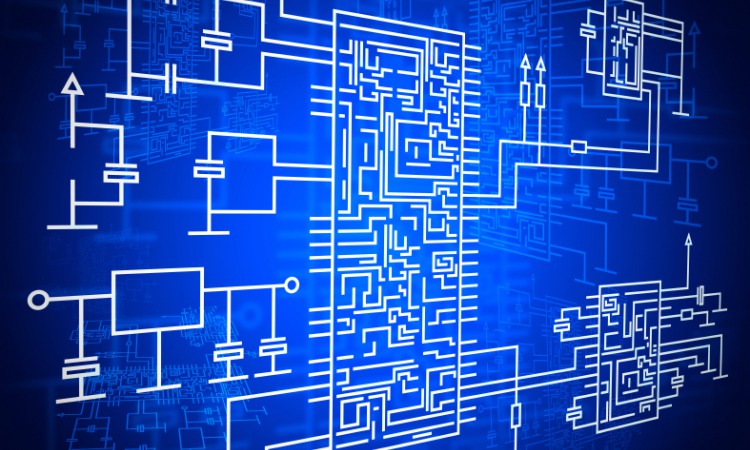Professional Electrical Design Services for New Constructions and Renovations
Professional Electrical Design Services for New Constructions and Renovations
Blog Article
Ingenious Electrical Design Solutions for Modern Facilities
As city settings grow significantly intricate, integrating technologies such as smart grids and sustainable power sources becomes extremely important. These developments not just promise to optimize power consumption but likewise foster durability versus future demands.
Value of Innovative Electrical Design
Cutting-edge electrical design plays a vital function in modern framework, influencing not only efficiency however additionally sustainability. As cities advance and the need for power increases, the need for advanced electrical systems ends up being extremely important. These systems have to not just meet present demands but likewise prepare for future growth and technical innovations.
A well-executed electric design can considerably decrease energy intake, thereby decreasing functional costs and lessening environmental impact. By integrating eco-friendly power sources, such as solar panels and wind generators, cutting-edge styles can improve power independence and strength. Wise grid technologies enable for real-time tracking and management of power circulation, optimizing performance and reducing waste.
Safety is one more crucial facet of electrical design. Implementing strenuous requirements and sophisticated innovations can mitigate dangers related to electric failings, guaranteeing a protected setting for organizations and homeowners alike. Additionally, ingenious styles assist in flexibility, allowing infrastructures to integrate emerging technologies effortlessly.
Trick Patterns in Electrical Design
As the landscape of electric design continues to develop, a number of vital patterns are shaping the future of the market. One considerable fad is the combination of wise innovation right into electrical systems. The proliferation of the Internet of Things (IoT) has actually made it possible for real-time surveillance and control of electric tools, improving performance and helping with anticipating upkeep.
One more fad is the expanding focus on modular design. This strategy allows for scalable and adaptable options, making it possible for framework to adapt to transforming requirements without substantial improvements. In addition, using sophisticated simulation devices and Structure Details Modeling (BIM) is ending up being progressively common, enhancing the design procedure and boosting cooperation among stakeholders.
Additionally, improvements in materials science are resulting in the growth of lighter, extra sturdy, and energy-efficient components. This technology is particularly essential for high-performance buildings and framework projects.
Finally, there is a marked shift towards data-driven decision-making - industrial electrical design. Leveraging data analytics helps developers enhance systems for efficiency and cost-effectiveness. With each other, these trends represent a transformative era in electrical design, improving functionality, sustainability, and strength in modern-day facilities
Sustainable Power Solutions
Lasting energy solutions are significantly coming to be a critical emphasis in electrical design, showing a wider commitment to environmental duty and source effectiveness. These remedies intend to minimize environmental effect while maximizing energy consumption in various facilities, from domestic structures to huge commercial centers.
Among the primary strategies includes the integration of renewable resource sources, such as solar panels and wind generators, into electrical systems. This not only lowers reliance on fossil fuels yet also improves power strength. Additionally, ingenious energy storage space systems, such as sophisticated batteries, allow reliable management and circulation of energy, guaranteeing that excess power generated throughout top manufacturing can be made use of during high demand durations.
In addition, energy-efficient design methods are being adopted to enhance general system efficiency. This includes making use of energy-efficient lights, cooling and heating systems, and wise structure technologies that monitor and adjust power usage based upon tenancy and environmental problems.
Smart Grid Technologies
The application of sustainable energy remedies normally causes the exploration of smart grid modern technologies, which play a critical role in modernizing electrical systems. Smart grids leverage advanced communication technologies and data analytics to enhance the reliability, performance, and sustainability of electricity distribution. By incorporating digital modern technology with traditional grid official site infrastructure, these systems facilitate real-time surveillance, automated control, and improved decision-making capacities.
Among the crucial functions of clever grids is their ability to accommodate renewable resource sources, such as solar and wind power. This flexibility not just decreases dependency on fossil gas but additionally enables a much more decentralized energy manufacturing design. Additionally, smart grids enable demand response programs, where customers can change their power use based upon real-time pricing, thereby promoting energy conservation and lowering peak tons demands.
In addition, smart grid modern technologies boost grid resilience by making it possible for quicker identification and resolution of outages, eventually decreasing downtime. With anticipating maintenance and analytics, energies can boost and enhance procedures service shipment. As cities and areas industrial electrical design remain to evolve, smart grid modern technologies are important for constructing a sustainable and reliable electric infrastructure that meets the demands of modern-day society.

Future-Proofing Facilities
To ensure long-term stability and versatility, future-proofing infrastructure is essential in the rapidly advancing landscape of electric design solutions. As technology developments and energy needs shift, it is vital that electric systems are made with versatility in mind. This requires integrating scalable services that can fit future upgrades without demanding comprehensive overhauls.

Additionally, sustainability needs to be a cornerstone of future-proofed designs. Using renewable resource resources, such as solar and wind, and enhancing energy performance reduce reliance on nonrenewable fuel sources, lining up with global initiatives to combat climate adjustment.
Conclusion
To conclude, cutting-edge electrical design services play a crucial role in shaping modern-day facilities. By prioritizing sustainability, flexibility, and efficiency, these services deal with the progressing needs of energy systems. article The assimilation of clever grid modern technologies and sustainable power services boosts strength and reduces functional costs. Future-proofing facilities with sophisticated simulation tools and modular approaches guarantees that electrical systems stay responsive to altering demands, ultimately adding to an extra energy-independent and sustainable future.
A well-executed electric design can considerably reduce energy consumption, therefore decreasing operational costs and lessening ecological impact. By incorporating eco-friendly power resources, such as solar panels and wind turbines, ingenious styles can improve power freedom and strength. Additionally, cutting-edge power storage systems, such as innovative batteries, allow effective monitoring and circulation of power, making certain that surplus power produced during peak manufacturing can be used during high demand durations.
Smart grids allow demand response programs, where consumers can adjust their energy use based on real-time pricing, therefore advertising power preservation and minimizing peak lots needs. (electrical load calculation)
As technology developments and energy demands change, it is vital that electric systems are made with flexibility in mind.
Report this page